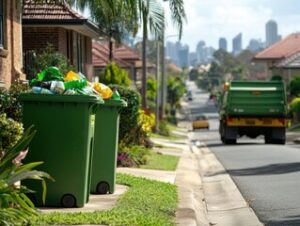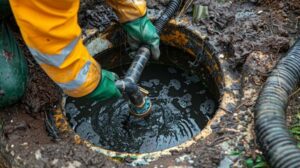Climate control systems are becoming smarter every day. Homes and buildings are no longer passive structures. They respond to temperature changes in real time. This shift redefines comfort and sustainability.

Air heating systems now rely on data-driven performance. They adapt to user behavior automatically. Advanced sensors learn routines and preferences. This reduces energy waste and enhances user comfort. Read on Ausco Air Heating & Air Conditioning for more details.
Microclimate zoning is changing how spaces are heated. Instead of warming entire areas, only occupied zones are targeted. This boosts efficiency and reduces cost. Personalized thermal environments are now possible.
Some systems use predictive algorithms to start heating in advance. They anticipate weather changes before they happen. This ensures rooms are ready at ideal temperatures. No more waiting for things to heat up.
Dual-source heating systems are emerging for hybrid needs. They switch between fuel and electric sources smartly. It ensures performance under any condition. Redundancy now means greater reliability.
Eco-fluid radiators are the newest development in clean heating. They use non-toxic thermal liquids. These fluids distribute heat more evenly than water. They are safer and last longer with minimal maintenance.
Air conditioning is now integrating biometric technology. Systems adjust based on heart rate and skin temperature. This creates a truly tailored comfort experience. It reacts to your body, not just the air.
AI-controlled vents offer real-time directional airflow. They track where people move inside a space. Air follows users for consistent comfort. This leads to significant energy savings.
Some air conditioners now use evaporative cooling membranes. These absorb heat more efficiently than traditional refrigerants. The materials are renewable and safer for the environment. Cooling becomes smarter and greener.
Heat pump innovations now include magnetic compression. It replaces gas with magnetic fields to create pressure. This method is quieter and more efficient. The technology also lowers long-term emissions.
Self-cleaning filters have solved a major maintenance problem. These filters detect when they’re dirty and activate a cleaning cycle. They eliminate allergens and particles with minimal effort. Maintenance becomes more convenient than ever.
Ultra-quiet compressors are making cooling nearly silent. Improved acoustic insulation and design play key roles. Even powerful systems barely make a sound. Sleep quality and indoor peace both improve.
Some units are equipped with bacteria-killing UV-C modules. Air passes through a chamber with ultraviolet light. This eliminates airborne viruses and mold. It’s a built-in sanitizing system for healthier breathing.
Humidity-balancing systems are now standard in smart air units. They don’t just cool or heat—they adjust moisture too. This ensures better skin, respiratory health, and furniture protection. Balance is achieved in every dimension.
Thermal batteries are now supporting peak-hour relief. These store heat or coolness during off-peak times. They release it when energy demand is high. That saves money and reduces power grid stress.
Geothermal integration is becoming more accessible. Systems tap into earth-stored energy for consistent temperature control. It reduces fossil fuel use dramatically. Even in extreme weather, performance remains steady.
Augmented reality is now assisting in HVAC system repairs. Technicians wear AR glasses to identify problem zones quickly. They get digital guides in their field of vision. Repairs become faster and more accurate.
AI chat interfaces are also part of new HVAC ecosystems. Users can ask their heating system questions or give verbal commands. These systems learn and improve over time. Comfort becomes a conversational experience.
Invisible climate control is rising in popularity. This involves integrated ceiling or floor panels. These panels heat or cool without vents. It’s a minimalist solution for modern design lovers.
Phase-change materials are transforming duct linings. These materials absorb and release heat as needed. They regulate flow temperature naturally. This innovation reduces fluctuations inside the system.
Voice biometrics is replacing remote controls for some users. Your voice triggers personalized temperature settings. No buttons or apps needed. The system knows who’s speaking and adjusts accordingly.
Some new systems are inspired by nature’s own mechanics. Biomimicry mimics termite mounds or penguin circulation. These natural principles guide air flow and retention. The results are efficient and fascinating.
AI-powered load prediction is reshaping system capacity. It forecasts future energy needs based on lifestyle patterns. Systems prepare for change before it happens. That reduces startup lag and sudden power spikes.
Heat recycling is gaining more attention in industrial buildings. Waste heat is redirected into heating systems. This reduces energy input without affecting comfort. It’s a smart loop for maximum utility.
Nanocoatings are being applied to internal system parts. These coatings resist rust, mold, and microbial buildup. Efficiency stays higher for longer. They also reduce repair frequency significantly.
Cloud-based thermostats allow multi-property management. A single dashboard controls several locations at once. Ideal for businesses or real estate managers. Remote comfort is now completely manageable.
Quantum sensor research is exploring temperature detection at atomic levels. These sensors read room temperature with ultra-high precision. They allow perfect calibration. This may redefine accuracy standards.
Fabric-integrated climate systems are entering the furniture space. Chairs, curtains, and cushions can now warm or cool. They connect with HVAC systems seamlessly. Comfort expands beyond just room temperature.
Peltier modules are reentering the scene with better output. They cool small zones quickly with no moving parts. Their compact size fits in portable systems. On-demand personal cooling is possible on a desk or in bed.
Thermal mesh windows use electric current to adjust insulation. This tech can block or let heat pass through. It adapts to season and user preference. It adds another layer of control to temperature management.
Low-frequency waves are being tested for non-intrusive airflow. Instead of blowing air, sound waves guide movement. It creates uniform cooling or heating. The air stays still, but the temperature adjusts fluidly.
Building-integrated HVAC walls are rising in futuristic architecture. These replace traditional duct systems entirely. The wall becomes the heating and cooling unit. Rooms are clean, quiet, and uncluttered.
Microinverter integration is giving solar-powered AC systems a boost. Each panel powers an individual unit. That prevents system-wide failure. Modularity adds resilience and energy optimization.
Cryogenic airflow is an experimental cooling method in labs. It uses cooled gases in ultra-small doses. These systems target intense local cooling. It may lead to new standards for high-performance spaces.
Carbon-negative air systems are being engineered with algae filters. These units consume CO₂ while operating. They actively clean air and fight climate change. Comfort becomes a form of environmental action.
Thermoacoustic generators are a new heating possibility. They convert sound waves into heat without combustion. These systems are silent, efficient, and compact. They are perfect for eco-conscious micro-homes.
Hydrophobic ducts are reducing internal condensation. They repel moisture before it turns into mold. Air stays fresher and more breathable. Maintenance is easier with less internal grime.
Some cooling systems are integrating emotional feedback loops. Sensors track expressions or tone of voice. If someone is agitated or uncomfortable, the system adjusts. Emotional intelligence enters climate technology.
Color-changing wall panels are offering new thermal indicators. When walls warm or cool, they shift hue. This visual cue helps monitor efficiency. It’s beauty with purpose inside temperature-controlled homes.
Sub-sonic airflow patterns are being studied for silent climate delivery. These mimic underwater currents. They avoid turbulence and noise. Homes become quieter without sacrificing comfort.
Microbial-balanced air systems are the next health-focused innovation. They introduce good bacteria into the air. Harmful microbes are neutralized naturally. Air quality improves without harsh purifiers.
Cold plasma is now used for air purification in HVAC units. It kills viruses, breaks pollutants, and deodorizes. The method is fast and chemical-free. Cooling and cleaning happen at the same time.
With all these new breakthroughs, air heating and air conditioning go far beyond temperature. They now touch air purity, personal wellness, environmental impact, and architectural design. The future promises climate systems that think, feel, and act with intention. As technology fuses with sustainability, indoor comfort becomes a work of intelligent evolution.








